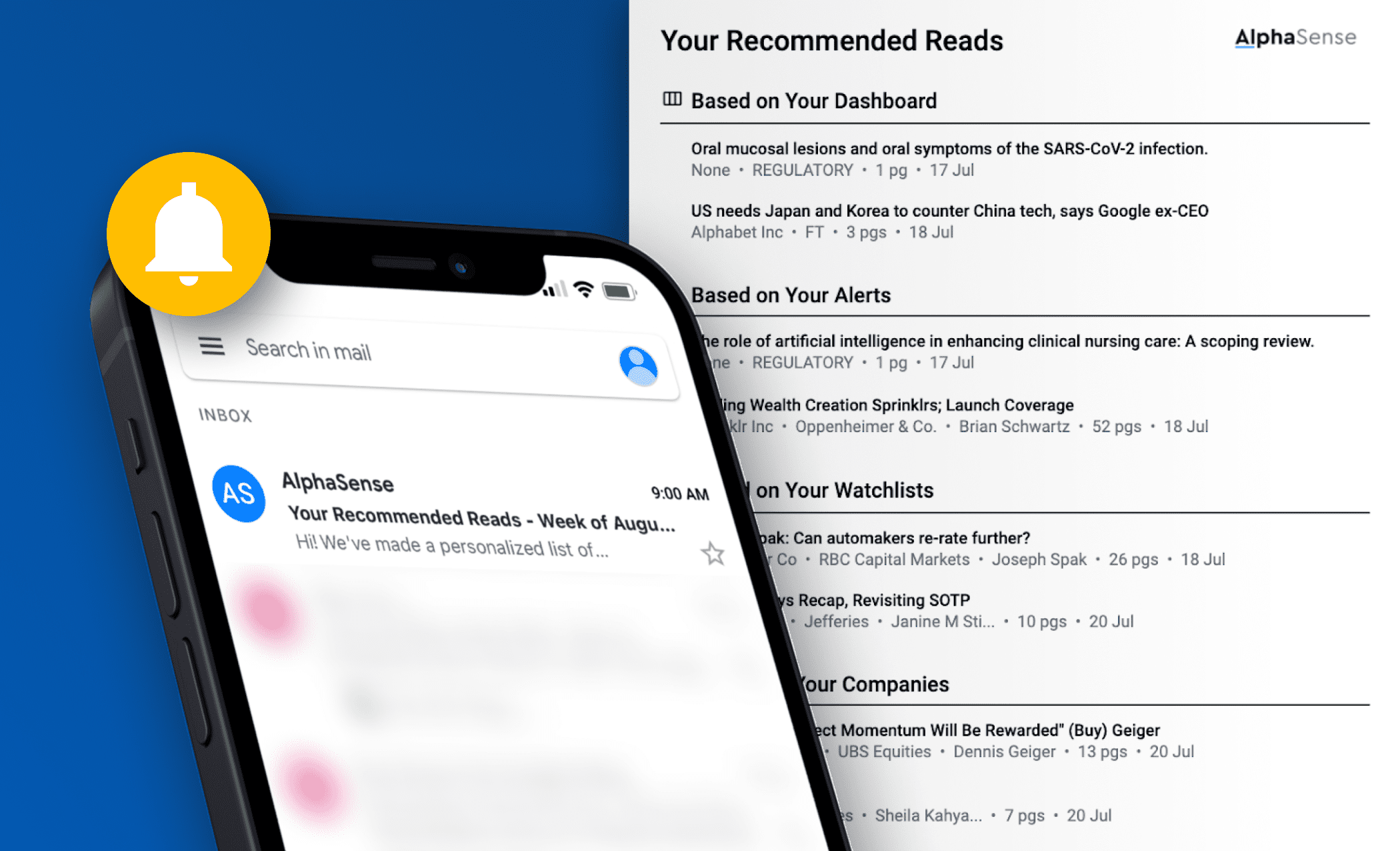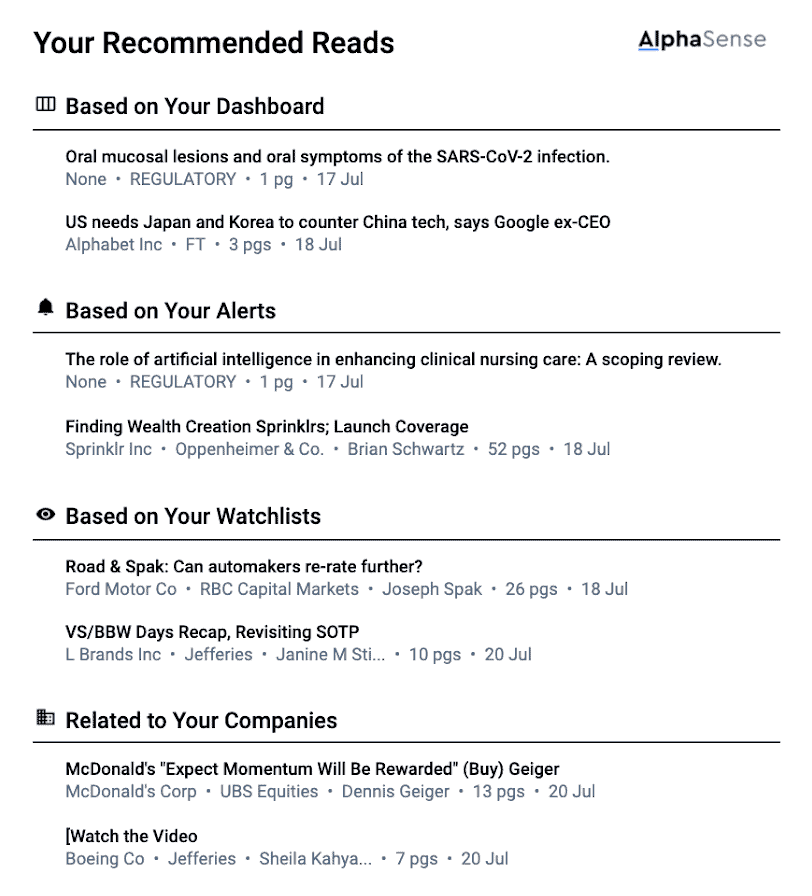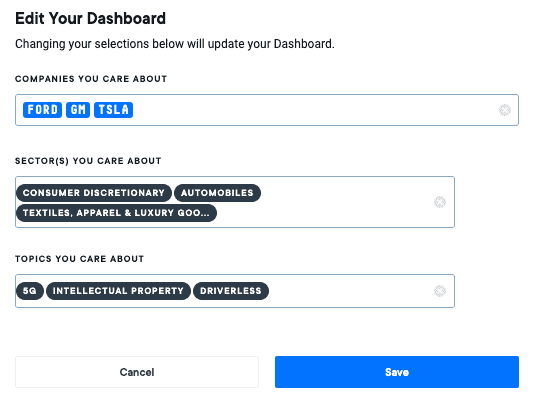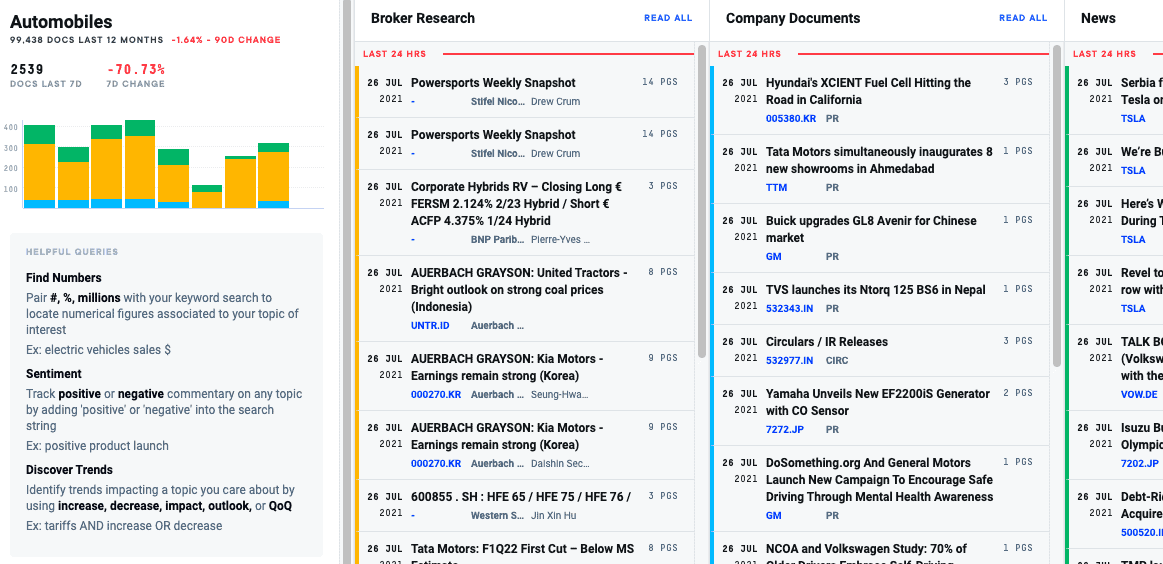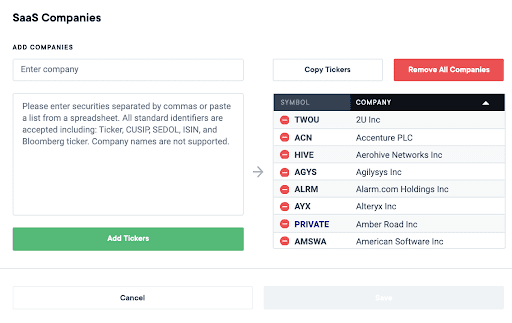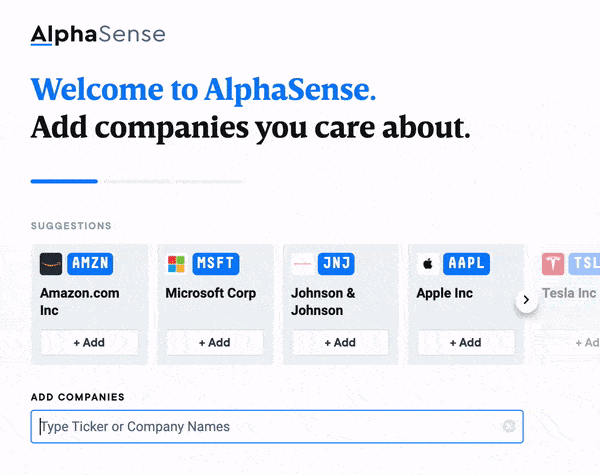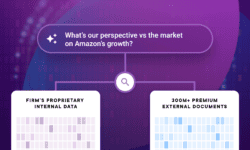AlphaSense empowers knowledge professionals to find the key information they need for their daily work. That’s why we’ve developed AI-powered search, summarization, and monitoring tools to help our users make faster and better-informed decisions.
However, users are still required to initialize searches and explicitly configure what kinds of documents they want to receive, that is, assuming the user has a definitive query. You have to tell AlphaSense what you’re looking for and keep searches up to date over time.
Recommendations, on the other hand, proactively suggest relevant information without the need to initialize searches based on your activity in the platform. Personalized recommendations have been the main driver of consumption on consumer content platforms, like Netflix, Youtube, Spotify, and TikTok. Leveraging similar technology, we sought to surface relevant and personalized information to our users in an effort to bolster the value they get from AlphaSense
Today we are introducing AlphaSense’s first document recommendation product feature: Recommended Reads.
What are “Recommended Reads”?
Recommended Reads is a weekly newsletter delivered straight to users’ email inboxes, containing personalized document recommendations based on users’ explicit and implicit inputs within the AlphaSense platform. It is a new alert paradigm created to help users discover more content in AlphaSense. In a Recommended Reads email, a user will receive recommendations organized in a few sections.
“I can see a parallel between Your Recommended Reads and Spotify Discover. I love when I hit play on Spotify every Friday I encounter new music and artist I wouldn’t have otherwise listened to. With Your Recommended Reads, it’s an exploration and new world of documents and content.” – VP, Investment advisory firm
Figure 1. An example of “Your Recommended Reads”
“Based on Your Dashboard”
This section recommends documents based on the topics, industries, and companies that a user has pre-selected in their dashboard. Our algorithm uses the dashboard settings as an input signal to select the top relevant documents they would be interested in reading but missed in the previous week.
(a)
(b)
Figure 2. Users can configure companies and industries of interests (a), to see related information in the dashboard (b).
“Based on Your Alerts”
This section recommends documents based on users’ alert settings. Alerts are an extremely useful monitoring tool, but can often produce an overwhelming amount of content. Our algorithm automatically aggregates and surfaces the most important documents from the previous week.
Figure 3. Users can set up saved searches to receive alerts.
“Based on Your Watchlist”
A watchlist includes a group of companies as seen in Figure 4. Among all the companies in a user’s watchlist, this section recommends top trending documents from the companies that are the most searched for by the user.
Figure 4. A watchlist containing a list of SasS companies.
“Related to Your Companies”
This section recommends trending documents from companies not included in a user’s dashboard, alerts, and watchlists. The recommended companies are powered by our algorithm that selects companies a user might be interested in. This set of recommendations expands the user’s search universe with the intention of surfacing unexpected documents and new companies that might add important insights or details to pre-existing searches and alerts.
“I noticed that it pulled up a company that we don’t currently watch, I liked that it pulled up [this company], because I don’t think we’ve ever searched for [this company] before, but it got us thinking that maybe we should check that out.” – VP, Investment advisory firm
Figure 5. A working example of similar companies.
“Related to Your Industries”
This section further expands the scope from related companies to industries. It includes trending documents from the industries that the recommendation algorithm thinks a user may be interested in.
“I remember when [my first recommended reads] came through, I was like “This is a spectacular idea!” It pulled up peers that we normally search for, it was nice to say, “oh maybe I should check that out” – FP&A Analyst, $50 Billion AUM
How Do We Do It?
The AI research team applies data-driven machine learning algorithms to recommend personalized relevant content. The algorithms are developed to understand users’ interests, find relevant documents from the AlphaSense content set, then rank and downsample them so only the most important and relevant documents are recommended to users.
Understanding User Interests
Identifying the interests of users is the first step in powering recommendations.
Our users set up watchlists, dashboards, and alerts within the platform, so we can curtail recommendations to match their preferences. Outside of those explicit preferences, users’ actions within the platform, such as reading a company’s documents or focusing on certain types of financial documents, tell us more about their business needs.
We built a statistical model to learn user’s preferences within the platform and this user preference model can answer questions like:
- What types of documents does a user read the most?
- Are users interested in large-cap or small-cap companies, or all of them?
- Which watchlists are actively used and meaningful to the user?
In this model, a user’s preference is only learned from the user’s own data. We make this decision to fully respect our users’ privacy within our platform. We go into further detail on that in the “Personalization and Privacy” section.
Retrieve Relevant Content
The next step is to retrieve content that is relevant to users. We have multiple ways to retrieve what’s most relevant from millions of documents. Once we know a user is interested in some topics and companies based on their platform configurations and actions, we run searches to retrieve all the available documents. Those include documents in “Dashboard” and “Alerts” sections.
From the user’s preference model, we know a user is interested in a set of companies, especially those in watchlists. We developed an algorithm to track the trends within our platform and recommend trending documents for the companies in the “Watchlists” section.
One goal of recommendations is to help users explore more content and discover new ideas. So we further expanded the relevant content beyond users’ explicit configurations. We developed a machine-learning algorithm to automatically identify relevant companies for any given company in users’ watchlists, allowing us to easily recommend documents for “Relevant Companies” and “Relevant Industries” even though a user has not explicitly identified those companies.
Ranking and Downsampling
From the above steps, there could be thousands of documents that are retrieved from hundreds of millions of documents. Ranking and downsampling are required to trim this large list so we can recommend only the most relevant documents for users to read.
We developed an algorithm to score the relevancy of a document based on multiple attributes, such as the document provider’s quality score, document recency, and the number of reads. This helps to remove less relevant recommendations.
We developed an algorithm that is based on the learned statistical model of user preferences to automatically downsample from the ranked list, so the final recommended documents match users’ preferences.
Taken together, these algorithms deliver the final curated list of recommendations.
Personalization and Privacy
With the user configurations and the learned user preference model, the recommendation is personalized for each user. If a user’s configuration changes, their activities will be automatically updated through data backend services and continuous learning algorithms. This creates an automatic mechanism that includes users, content, and algorithms in the loop.
Throughout the algorithm development, we respect users’ privacy. A user’s configuration is only used to personalize the user’s own recommendations and is not shared with others. Please see our privacy policy.
Conclusion
AlphaSense is committed to innovating the way users find the most useful information. The AI research team developed data-driven machine learning-based recommendation algorithms that integrate many AI components that have been developed for AlphaSense AI features.
We believe that recommendation features are a powerful tool to support information discovery and decision-making. We will continue to improve the algorithms based on user feedback and make the recommendation a universal experience with the AlphaSense platform.
“Knowing everything is part of the job, but it’s a manual process that pains us. I love seeing information that is not something I look at every day. I like that it’s capturing a wide net for us” – VP, Investment advisory firm
Learn how to optimize your recommendations by:
How AlphaSense Compares:
Factiva vs Feedly (vs AlphaSense)
Koyfin vs Bloomberg (vs AlphaSense)
PitchBook vs Crunchbase (vs AlphaSense)
PitchBook vs CB Insights (vs AlphaSense)

